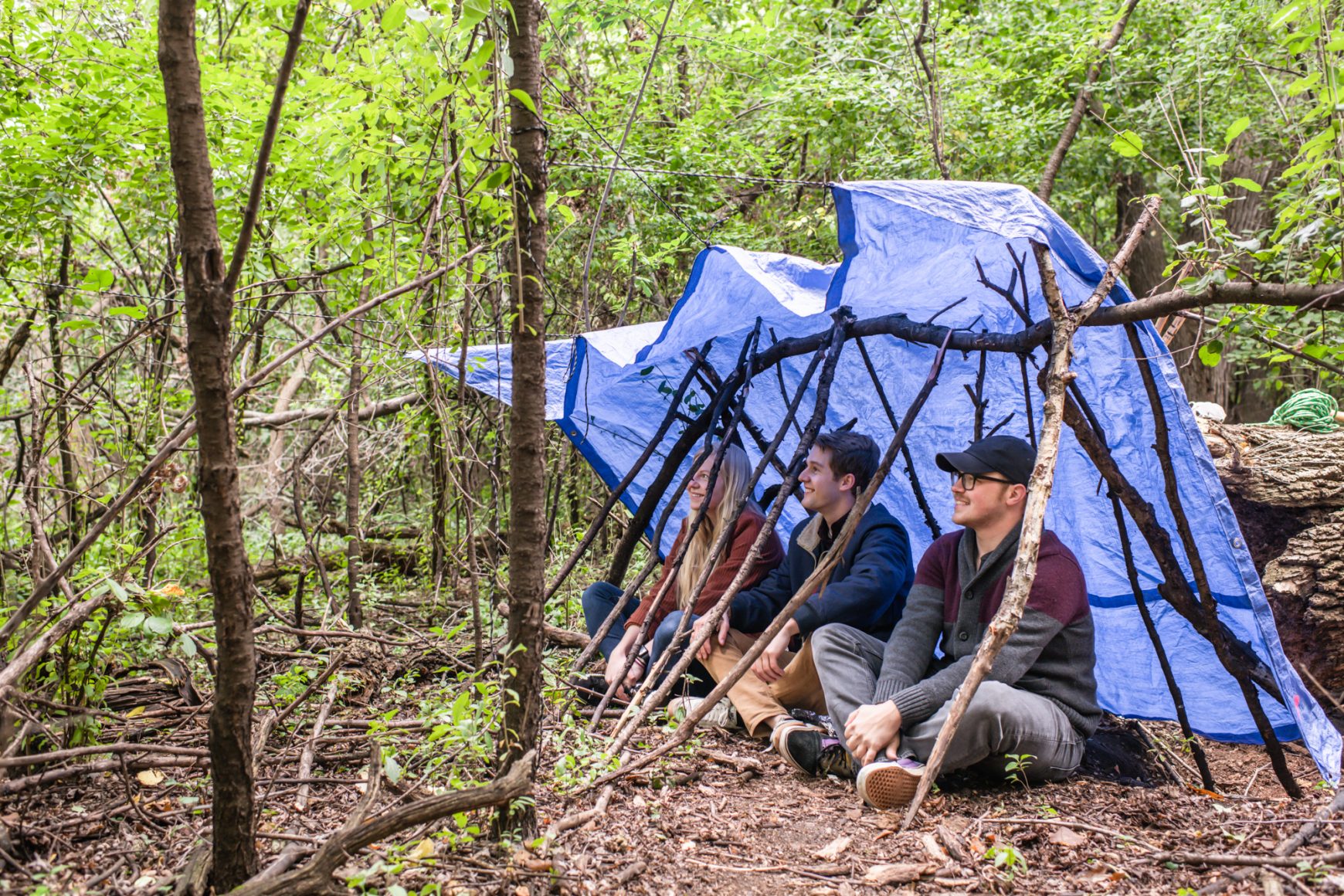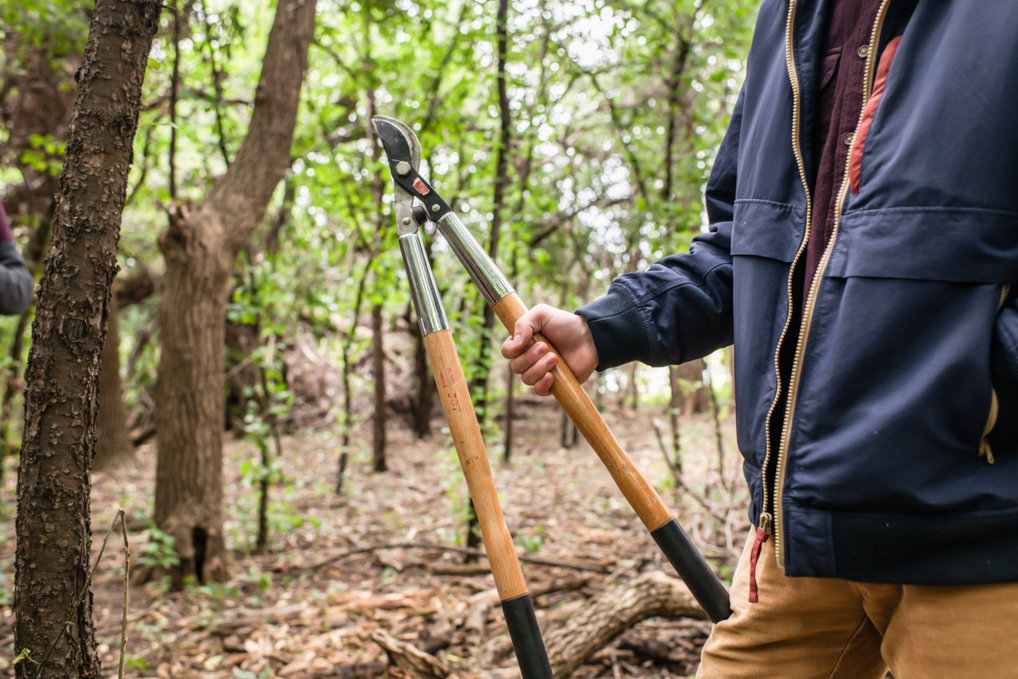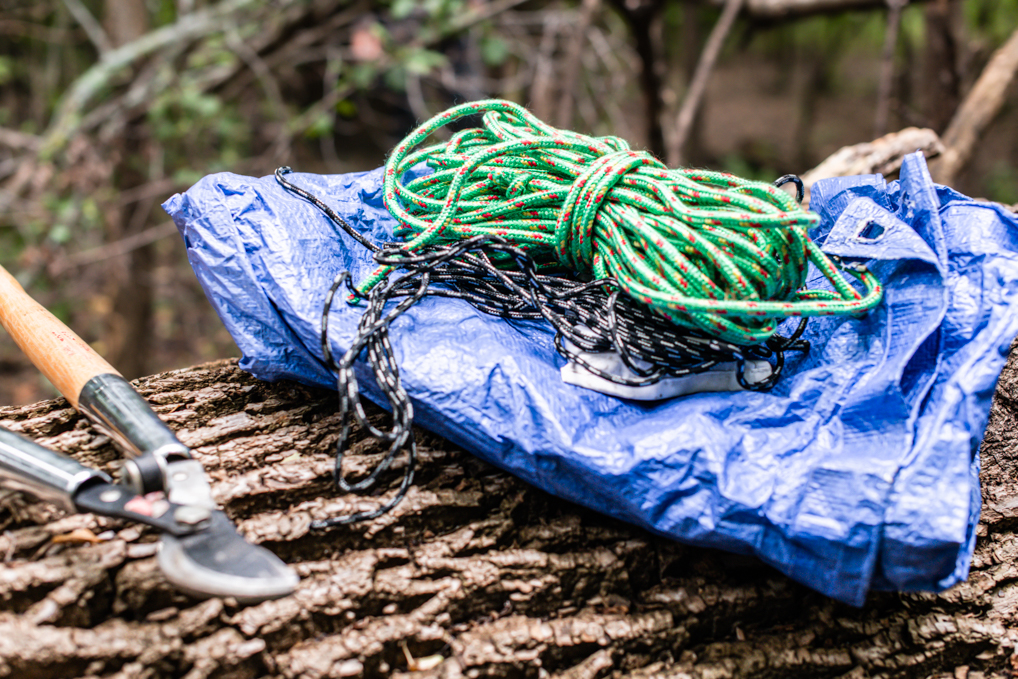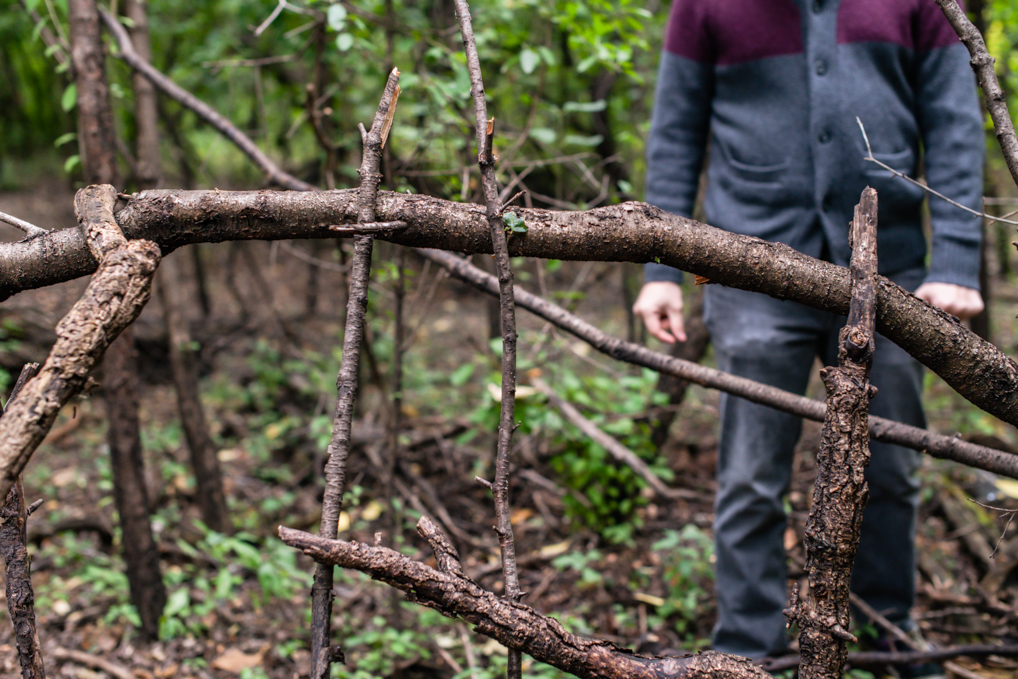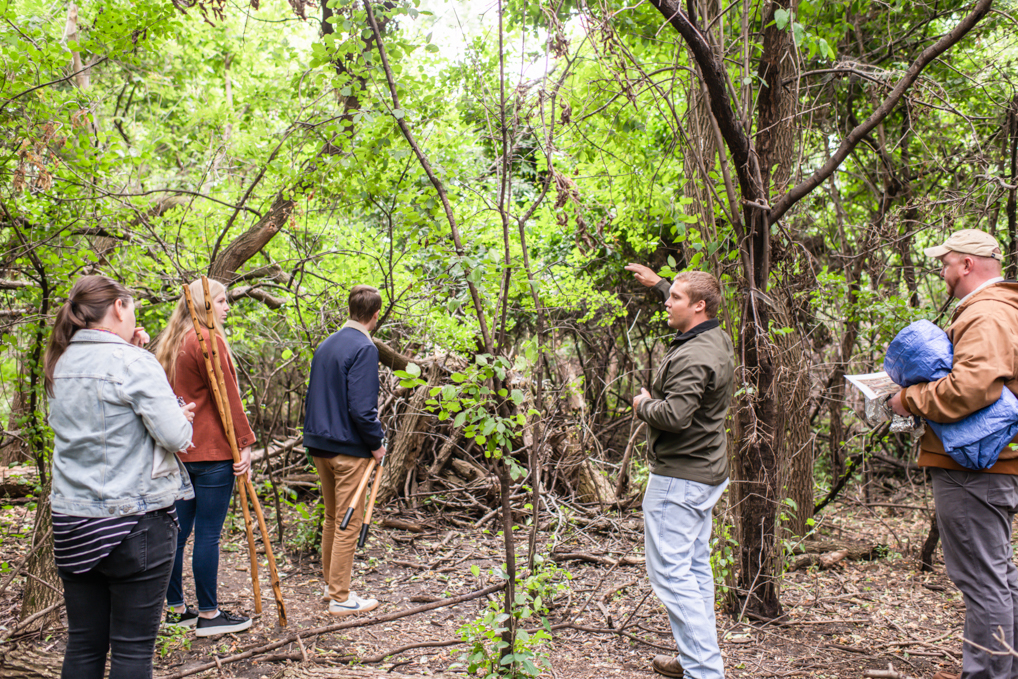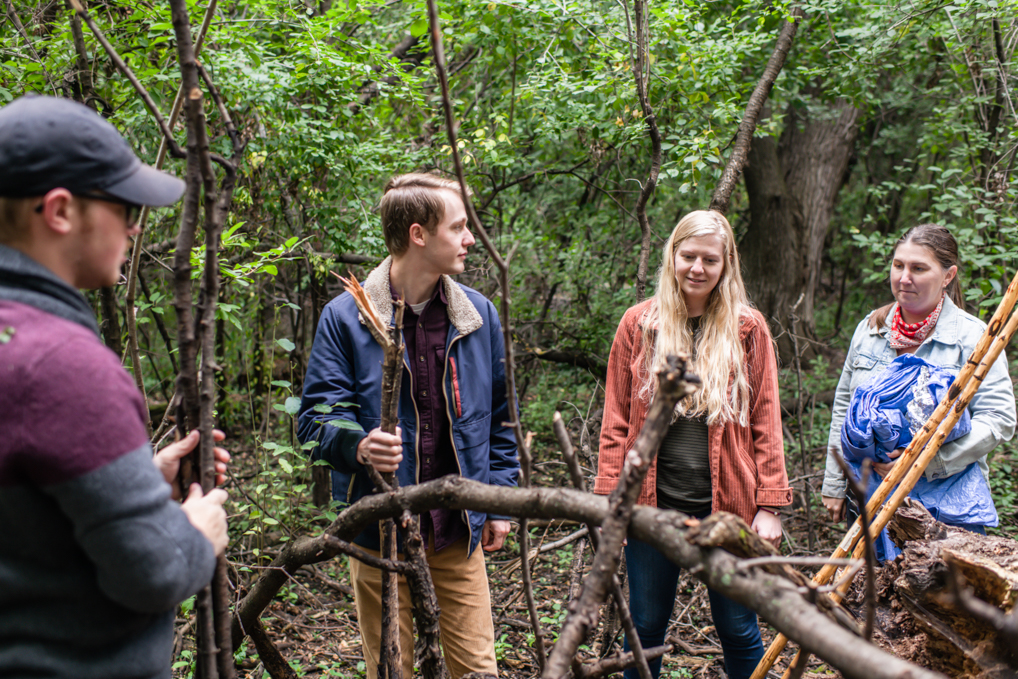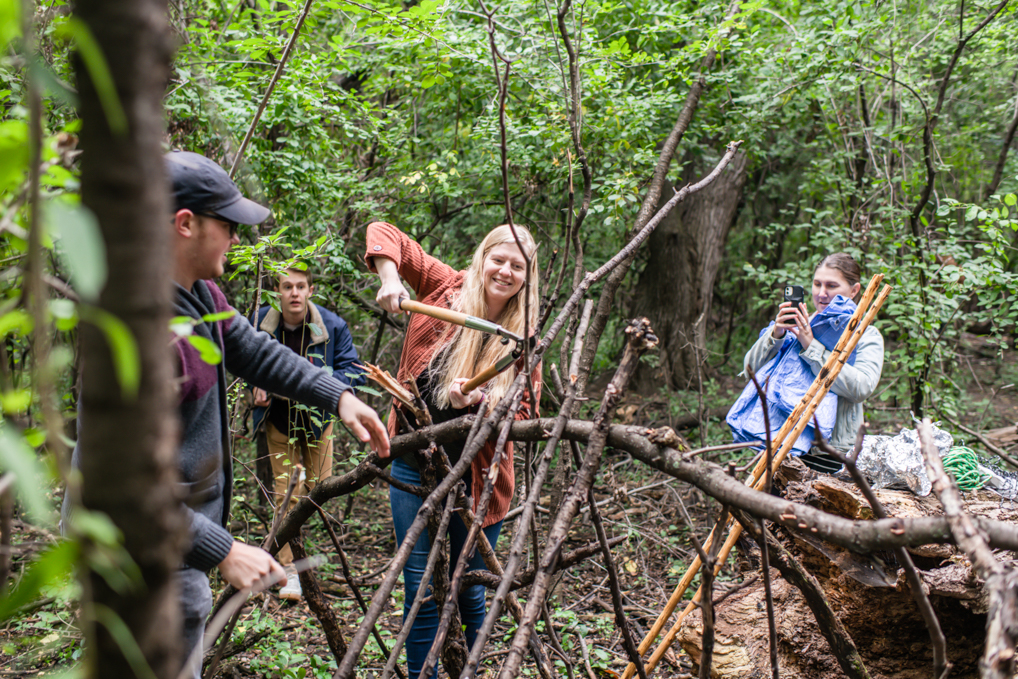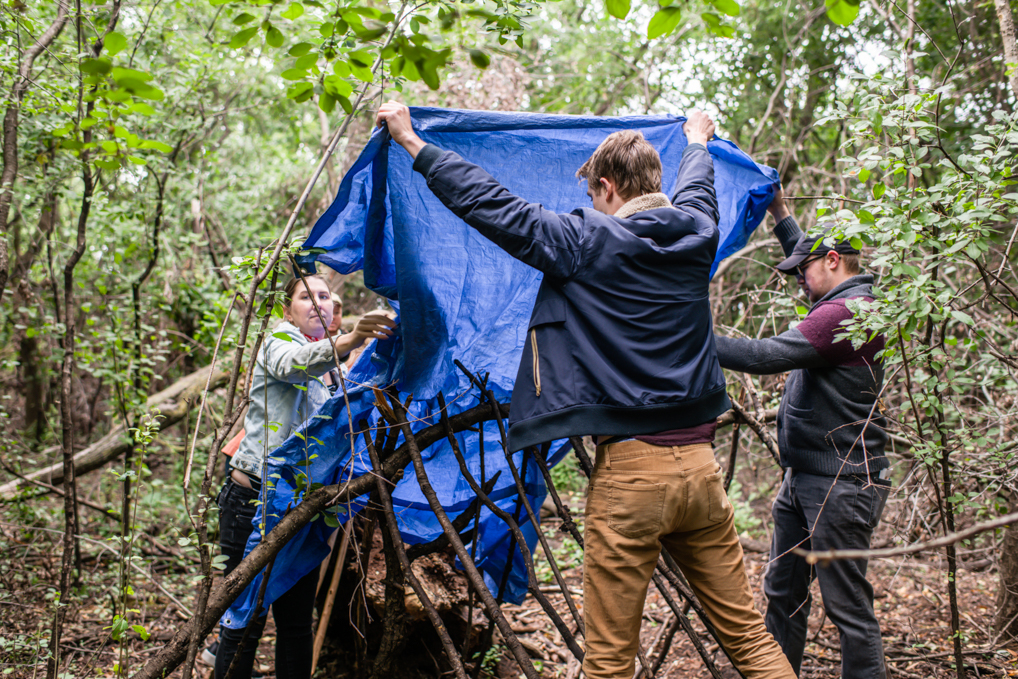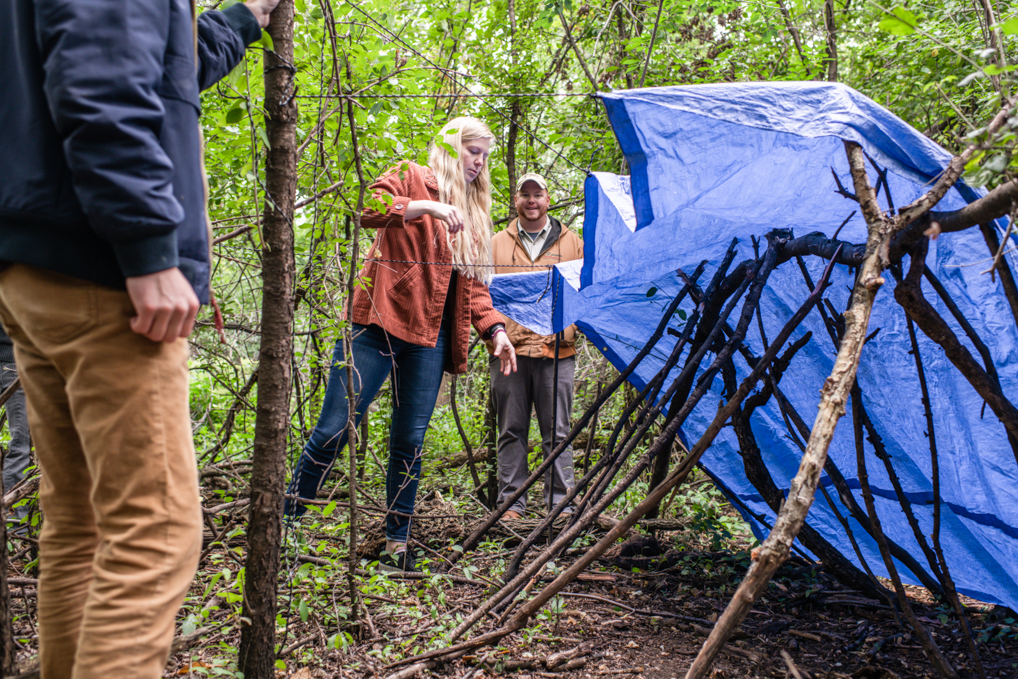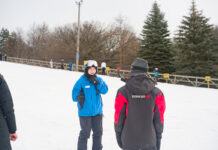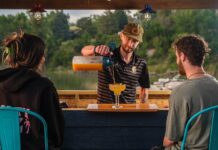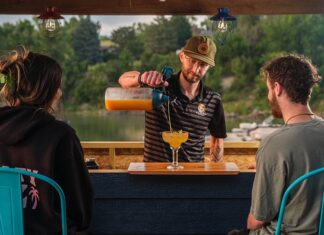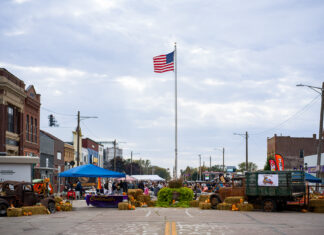The 605 crew was invited by the Outdoor Campus – East in Sioux Falls to try our hand at the Shelter 101 class on a crisp, fall afternoon.
Alex Osborne, volunteer coordinator and naturalist, and Jason Nelson, outreach coordinator, led the introduction inside giving initial tips on what we would experience and why.
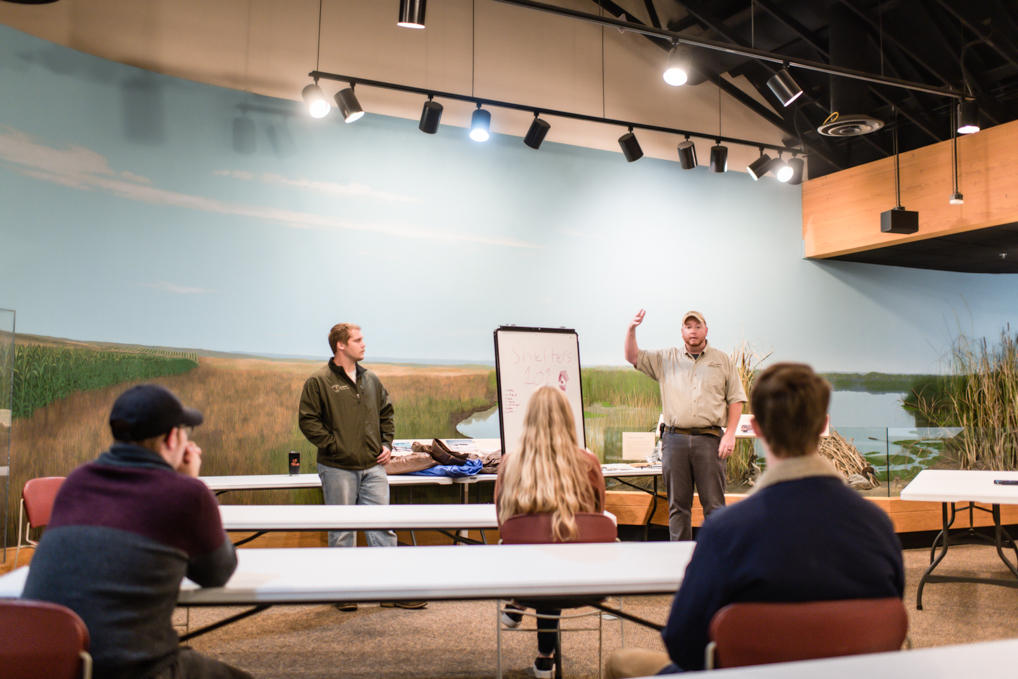
For one, did you know that you don’t want to sleep on the actual ground? When in doubt, gather leaves or sticks to lay as your base.
“Though it may be uncomfortable, it will keep you warm,” said Nelson. “The ground will literally suck the life out of you.”
Holy moly, they had our attention. We were instructed to grab items from the table, including ropes, tarps, an emergency space blanket, stakes, a saw, and more.
“You always want to make sure you have some sort of saw with you,” said Nelson.
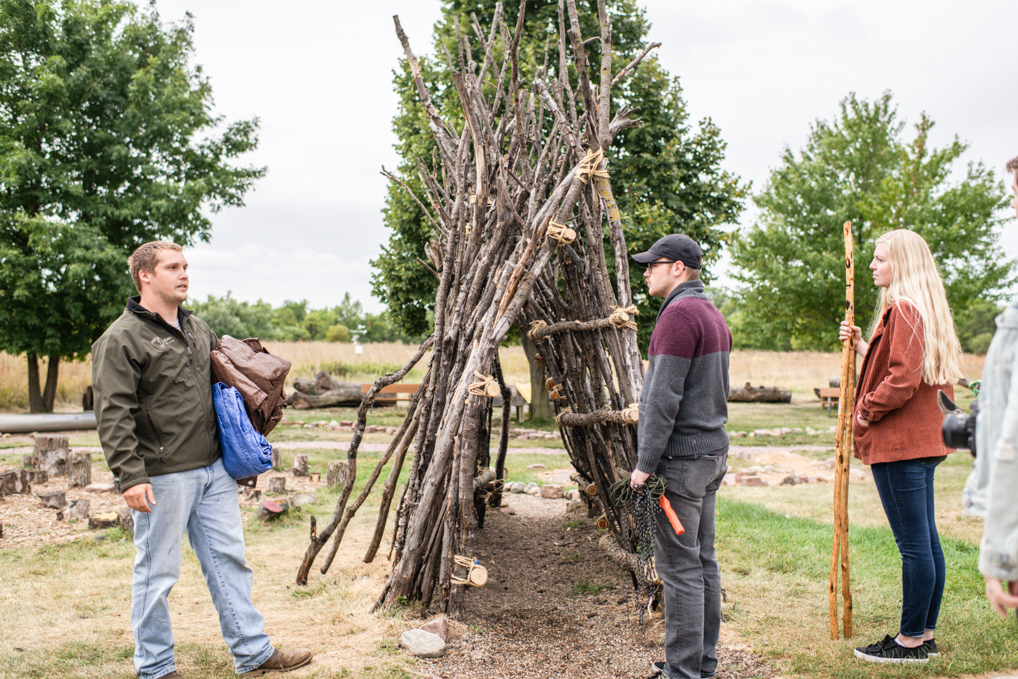
“This is great for people talking to each other and problem solving, like team outings.” – Nelson
The group walked out back toward the woodsy area. We were shown examples of former fort semblances (as many were destroyed by nature at that point), including A-frame wooden fortresses.
After a few more words of wisdom (like “location, location, location”), the leaders sent us off to attempt to make our shelter. As the others started their game plan, I stepped aside with the Outdoor Campus crew to chat.
“The building of the shelter and the structure is about half of our survival class where we would talk about getting out of the elements, what you need to survive,” said Nelson. “Do we just have to make the night or are we going to be surviving for a week?”
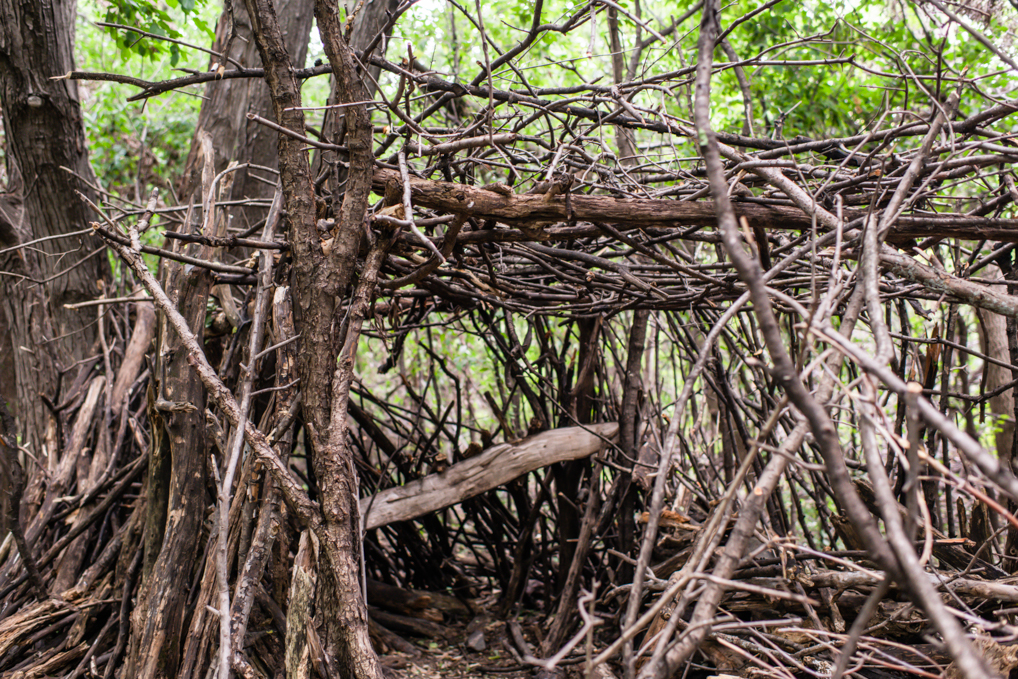
Other Group Programs
BB Gun Basics
Fall Nature Hike
Fishing Fun
GPS and Geocaching
Hunting Basics
Introduction to Archery
Orienteering
Paddling
Another part of the survival course involves fire starting.
“It’s a very popular class. It’s a great one for families. Even [the 605 team] is making decisions already,” he noted, pointing. “It’s a nice way to get people talking and working through some problems. Not many folks have needed to build a shelter before.”
I asked about the seeming trend of packing bare bones when camping or going on excursions.
“It’s always easier to just take off with the things you need. Then you can get in some smaller and recluse spots,” said Osborne. “You could hike into a spot with just the pack on your back and find a spot by a waterfall, where if you’re hauling a bunch of gear you’re limited sometimes.”
“I always recommend a spare set of bibs and a winter coat,” said Nelson on what to have in your car. “An extra blanket and firesource, like a lighter, are good. And candles for more of a light source rather than heat source are great, along with a portable phone charger. And of course, water.”
The shelter class, like others, attempts to have the group work it out as best they can.
“We give you everything you need and let you fail up to a certain point, and then we step in and tell them what we like, what other people have done, and what they could do differently,” said Nelson.
When asked about certain reactions they’ve received, Nelson said, “Some of the more entertaining ones are that people are scared they’ll get eaten by a bear. We don’t have bears around here. The animals aren’t what is going to hurt you, it’s the elements.”
He continued, “You don’t know what you don’t know, so a lot of people don’t think to have a tarp with them or a rope, or a few essentials to keep the wind off of your back if you really needed it.”
Osborne commented that some think it’s easier than it seems.
“A lot of people think it’s simple to make a lean-to, a lot of people think it’s simply leaning a stick against another stick, and they think they’ll get it perfect the first time and it gets tricky and just takes some work,” he said.
The best part? Surviving doesn’t hurt the wallet.
“You don’t need to spend a fortune. We’ve got $10 of materials out here,” said Nelson. “You don’t have to be wealthy to come out and enjoy the outdoors.”
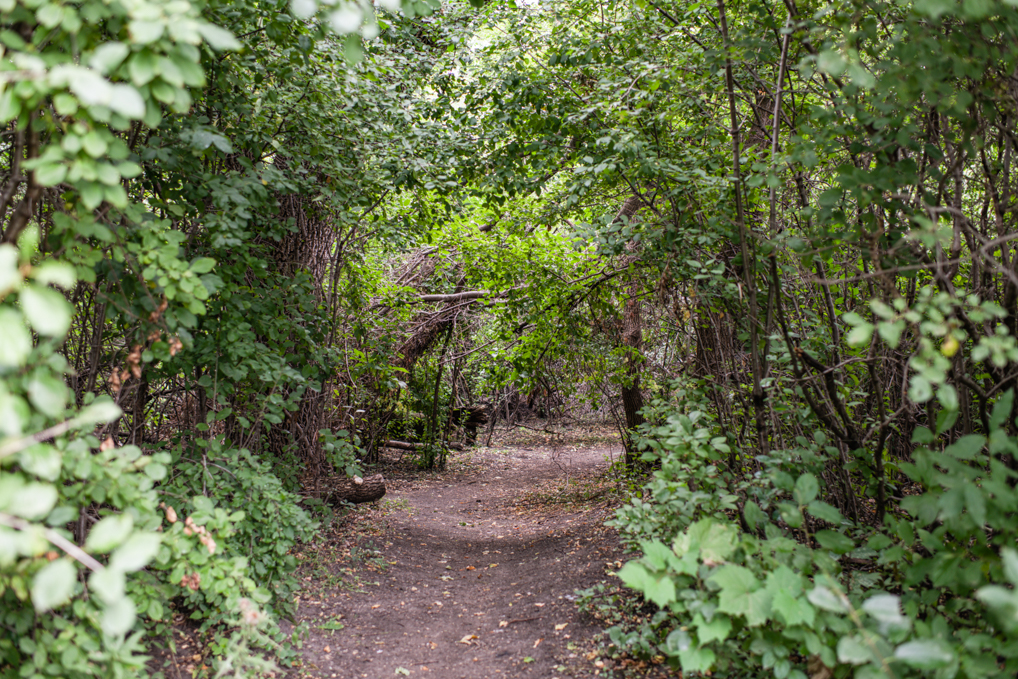
Patrons can sign up via the website, or they can call and book a course as long as they have at least eight people. Age-wise Nelson and Osborne say they cater to each class.
“We tailor to anybody,” said Nelson.
Osborne commented, “We can take attendees anywhere from ages 3 to 93, and we’re not going to turn away age 103.”
Along with survival courses, there are “a gillion things” you can sign up for at the Outdoor Campus.
“I assumed they would do better than the kids, but they did a pretty good job.” – Nelson on 605’s shelter
“We do a lot of shooting with BB guns and archery, we do a lot of fishing, paddling, canoeing, kayaking. We do axe throwing. We do actual hunting events … Most of us are involved in a Hunting 101 program where we take novice sports people and get them all through the process of learning how to shoot and then go deer hunting for real and harvest deer and teach them how to butcher and process,” said Nelson.
“It’s start to finish. We do the same with fishing with a catch it, cook it, clean it,” explained Osborne. “They come out, learn how to set up their tackle, go fishing, catch the fish, then bring their fish back and we’ll give them a few recipes to cook it.”
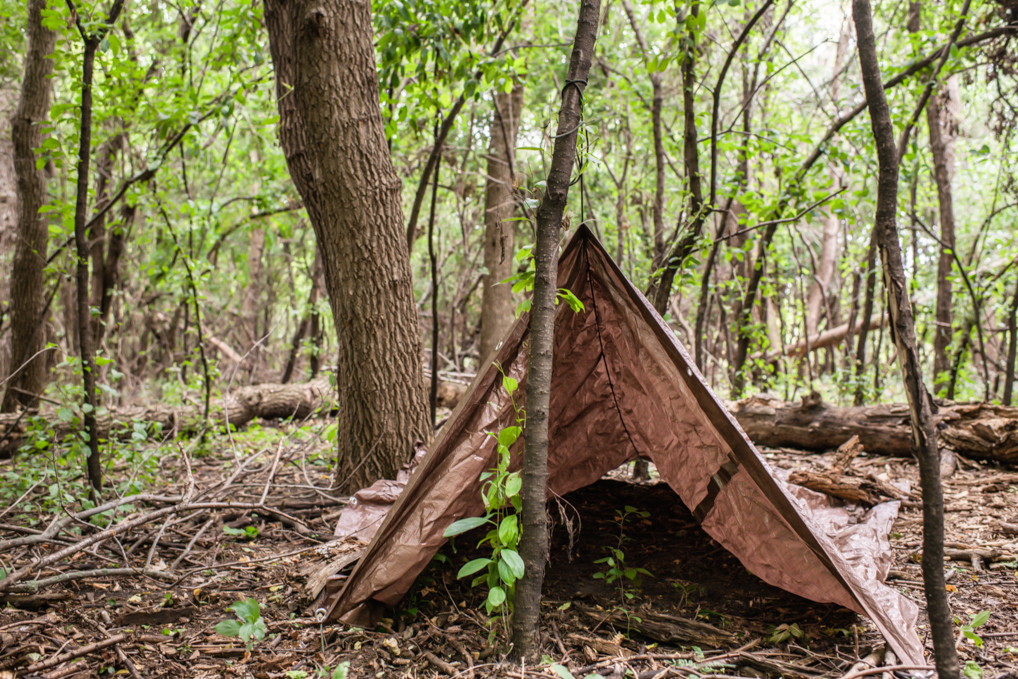
Along with skills programs there are also knowledge courses.
“It involves South Dakota animals, mammals, nocturnal animals, reptiles, amphibians, pollinators, animals movements… You name it,” said Osborne. “With whatever you’re interested in, you can always learn something about the outdoors.”


